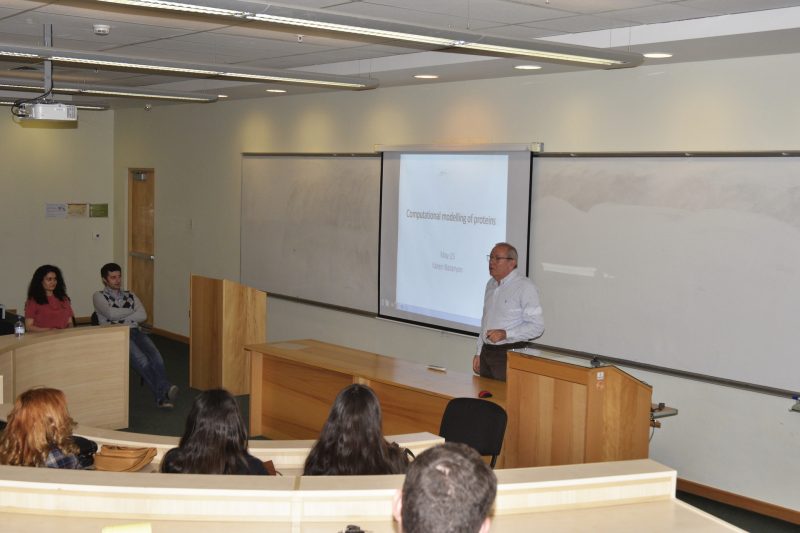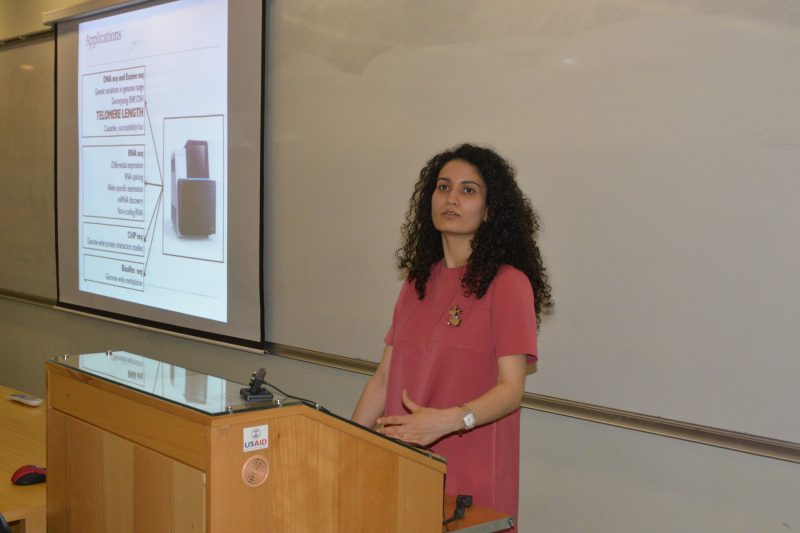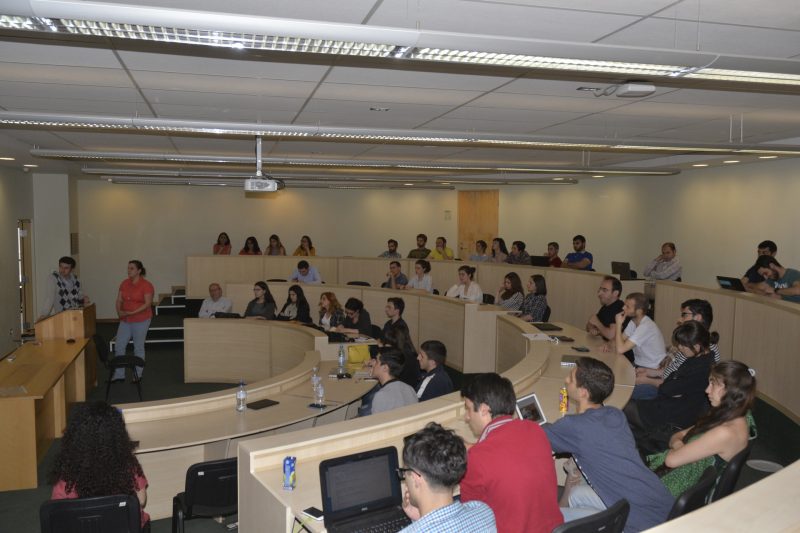
Workshop: Bioinformatics for Computer Scientists: Why is it Interesting?
2 min readYEREVAN, Armenia – On May 25th, the American University of Armenia (AUA) College of Science & Engineering in collaboration with the IMB Bioinformatics Group, Binder’s group, and Nazaryan’s laboratory hosted a public workshop on bioinformatics led by Arsen Arakelyan, PhD, Lilit Nersisyan, MSc, Anna Hakobyan, MSc, Hans Binder (via Skype), PhD, and Karen Nazaryan, DSc.
The workshop provided a basic introduction to bioinformatics, and displayed its applications in biomedicine, particularly personalized medicine, cancer research and drug design. In addition, computational challenges were presented, along with the potential of computer sciences to solve the fundamental issues in biomedicine. The guest speakers intended to discover students interested in bioinformatics and to discuss their potential involvement in our future projects.
Arsen Arakelyan is the Director of the Institute of Molecular Biology (IMB) NAS RA, Head of the Bioinformatics Research Group at IMB NAS RA, and AUA CSE Adjunct Lecturer on Introduction to Biosciences. Lilit Nersisyan is the Junior Researcher at the Bioinformatics Research Group at IMB NAS RA, and AUA CSE Adjunct Lecturer on Introduction to Biosciences. Anna Hakobyan is the Junior Researcher at the Bioinformatics Research Group at IMB NAS RA R&D Engineer at Synopsys Inc. The IMB Bioinformatics Group develops and applies algorithms and software for analysis of high-throughput gene expression data, next generation sequencing data and links it to molecular networks and pathways in order to facilitate discovery of pathomechanisms of various diseases. Another direction of the group is analysis of genomics data to study telomeres – the “genomic clocks” of the cell that are implicated in aging, age-related diseases, and cancers.
Hans Binder, PhD is the Acting Manager of the Interdisciplinary Centre of Bioinformatics, Leipzig, Germany. Binder’s group is engaged in analysis of terabytes of high-throughput data generated by newest generation sequencing and microarrays. Binder’s groups has developed a comprehensive analysis and visualization pipeline based on self-organizing maps (SOMs) that transforms large and heterogeneous sets of molecular biological data into an atlas of sample-specific texture maps which can be directly compared in terms of similarities and dissimilarities.
Karen Nazaryan, DSc is the Head of the Laboratory of Computational modeling of biological processes (IMB NAS RA). Nazaryan’s laboratory uses modern methods of bioinformatics and computational biology for modelling and in silico analysis of the processes of protein-protein, drug-target interaction. Recent research is focused on computational modelling of the protein Pyrin, which is implicated in Yerevanian disease.
Founded in 1991, the American University of Armenia (AUA) is a private, independent university located in Yerevan, Armenia and affiliated with the University of California. AUA provides US-style education in Armenia and the region, offering high-quality, graduate and undergraduate studies, encouraging civic engagement, and promoting public service and democratic values.



